Patagonia
Lauric and Nao sailed around Tierra del Fuego on a Dufour 35. A fascinating and demanding voyage in the wake of Magellan.
Patagonia isn’t a place you want to speed through. At least, not if you really want to discover it. Its glacier-carved, windswept fjords and canals demand patience and reward curiosity. Aboard a 35-foot fiberglass sailboat, there’s no hurrying – not through the williwaws, not through the ice, and certainly not into this wild immensity found nowhere else. Here, freedom doesn’t mean going where you want, when you want. It means adapting to the weather and letting it dictate your pace. Nothing is done quickly, and that’s exactly what we were looking for.
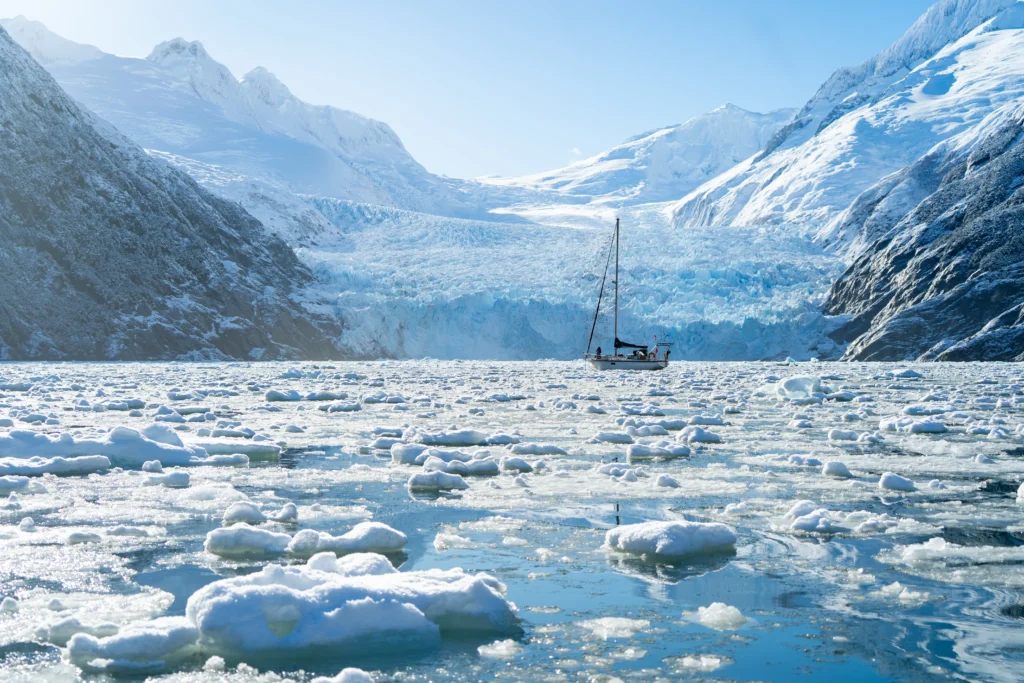
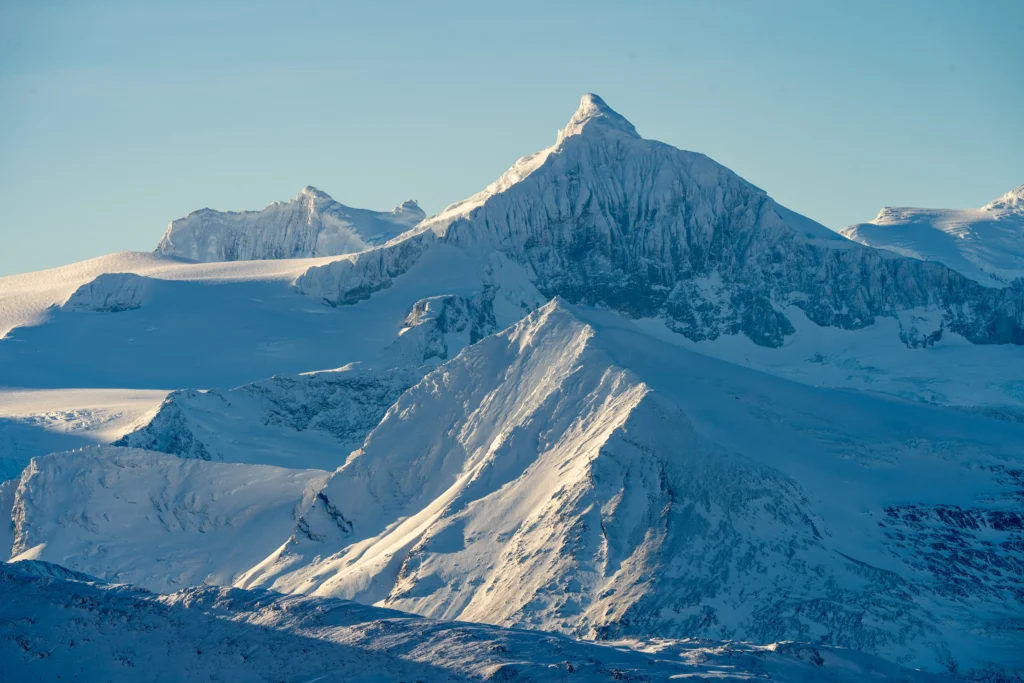
Chilean Patagonia would probably be overrun if it weren’t so isolated, and if its climate didn’t do such a good job of keeping most people at bay. The thousands of islands that line the southern tip of the continent, from Cape Horn to Chiloé, stretch for more than 1,500 nautical miles, creating a tangle of fjords and islands exposed to the elements. But despite its growing reputation, the region still feels like a forgotten world. My partner Nao and I had just completed an 8,000-mile Atlantic crossing in four months, with the aim of reaching southern Chile before the southern winter. Our Dufour 35, Tupaia, led us faithfully to Puerto Williams, at the southernmost tip of Chilean Patagonia. After weeks of sailing dictated by the weather, punctuated by watches and all-too-brief stopovers, we were eager to ease off, get back to a slow pace and finally take the time to explore the region.
Ice cream in Tierra del Fuego
We began by exploring the Beagle Channel which, despite its location “at the end of the world”, is surprisingly lively in summer. Its proximity to Ushuaïa attracts charter sailboats and cruise ships bound for Antarctica. But from April onwards, the hustle and bustle subsides and the lows that punctuate summer give way to a peaceful atmosphere. Indeed, at this time of year, the South Pacific and Antarctic high pressure systems move apart, and the channel that usually channels storms over Tierra del Fuego widens. An anticyclone is then established to the south of the continent, pushing bad weather north or south, sparing the Beagle and offering a surprising number of calm, sunny days. In winter, the days are short but grandiose – the sun, which never really seems to rise or set, just hangs over the sharp peaks of the Cordillera Darwin, enveloping the area in low-angled light. For us, first-time sailors in this region, each day brings its own new discoveries. The first ice cubes gently slap against the hull. The first glacier, immense. The first snowfalls and the first nights spent surrounded by frost. Then comes the first gust of wind.
Howling fifties
The Wollaston-Hermite archipelago, home to the mythical Cape Horn, gave us an eloquent demonstration of the meaning of the Howling Fiftieth. We were stuck in Puerto Maxwell for eight days, pinned down by a series of lows. Every morning, we consulted the GRIBs, hoping for a respite, only to see a new front form to the west. The gusts rushed into the anchorage in a never-ending series of williwaws, throwing spray to the surface and shaking Tupaia violently. But this tumult was part of the scenery, rough but without any real threat thanks to our numerous moorings ashore. In my opinion, it was one of the highlights of this part of the trip. Even more so than the idyllic days spent exploring the nameless anchorages around the archipelago’s snow-covered islands, or the exhilarating sailing around Cape Horn. There’s something vertiginous, something moving about being truly cut off from the world, knowing that at that moment there’s no way of getting back or being reached. Later, as we round the western tip of Tierra del Fuego, our desire to see Patagonia as anything other than a series of trials is undermined, as it is here that we face the most difficult conditions. The cold is biting, the wind relentless. The williwaws lift the water like smoke, so dense that it blurs the contours of the coastline, transforming the landscape into a confused mass of gray and din. On the sheer cliffs above us, waterfalls are swept away by the gusts and rise towards the sky. When we finally reach the shelter of caleta Brecknock, we discover the extent of the damage: one of the lower halyards is damaged, the staysail and mainsail are torn. It will take us a week to carry out the repairs. From then on, Tupaia emits new noises, creaking like signals of weakness in the structural bulkheads. Far from discouraging us, this ordeal strengthened our resolve and reminded us that here, nature decides.
Mythical waters
To sail in these waters is inevitably to think of those who blazed the trail before us: Magellan, FitzRoy, Martial, Sarmiento, Agostini and many others. So many figures who have shaped the history of these coasts. Today, their names mark the canals, mountains and anchorages. We enter the legendary Strait of Magellan at Cape Froward – the southernmost point of the American continent. Sailing westwards in this section is notoriously difficult: the shape of the strait channels the prevailing north-westerly winds against us, while adverse currents and short seas add to our difficulties. What’s more, the season is now shifting from winter to summer, bringing chubascos – sudden squalls that make navigation even more unpredictable. But we’re taking our time, tacking from one side of the Strait to the other, making slow but steady progress each day. In one month, there are barely three days of calm, which we use… to make detours. First to a spectacular glacier, then to a penguin colony nestled in the forest. The rest of the time, we’re facing winds of 25 to 30 knots on a good day. On more difficult days, the wind blows relentlessly, making progress impossible. So we just sit tight and wait for it to pass. In such a hostile environment, we’re comforted by the kindness and generosity of the local fishermen. We always take the time to meet them. Despite the hardness of their work, they welcome us aboard to share a mate and offer us impressive quantities of shellfish, fish, centolla (king crab) and sea urchins. For us, these encounters add a real dimension to the voyage. These are moments to listen to their stories, learn more about the region and gather valuable information about anchorages and places to explore.
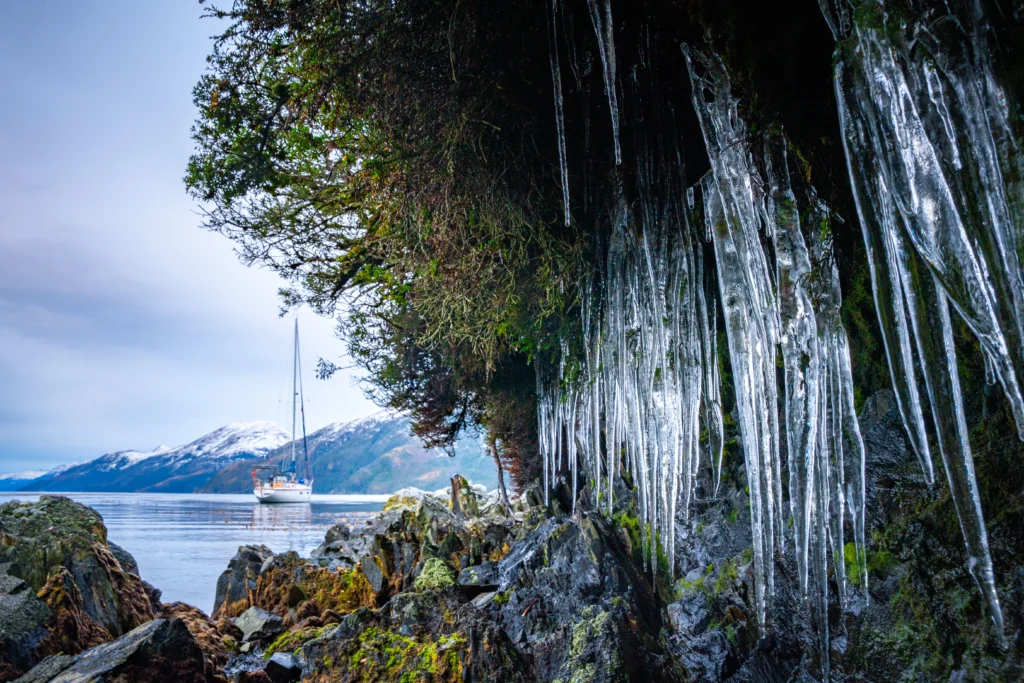
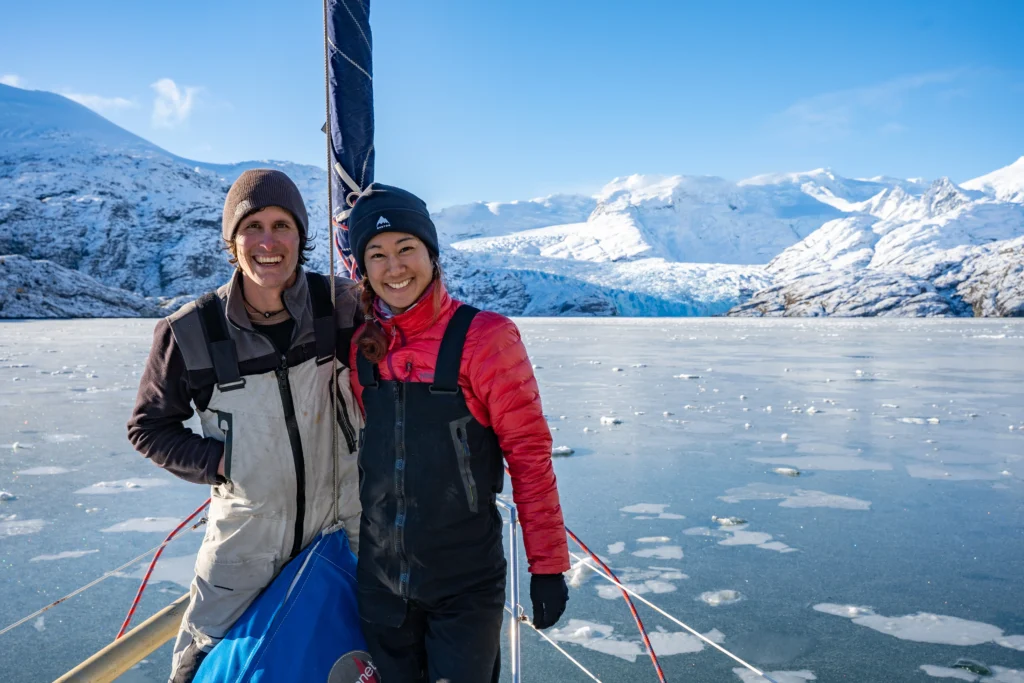
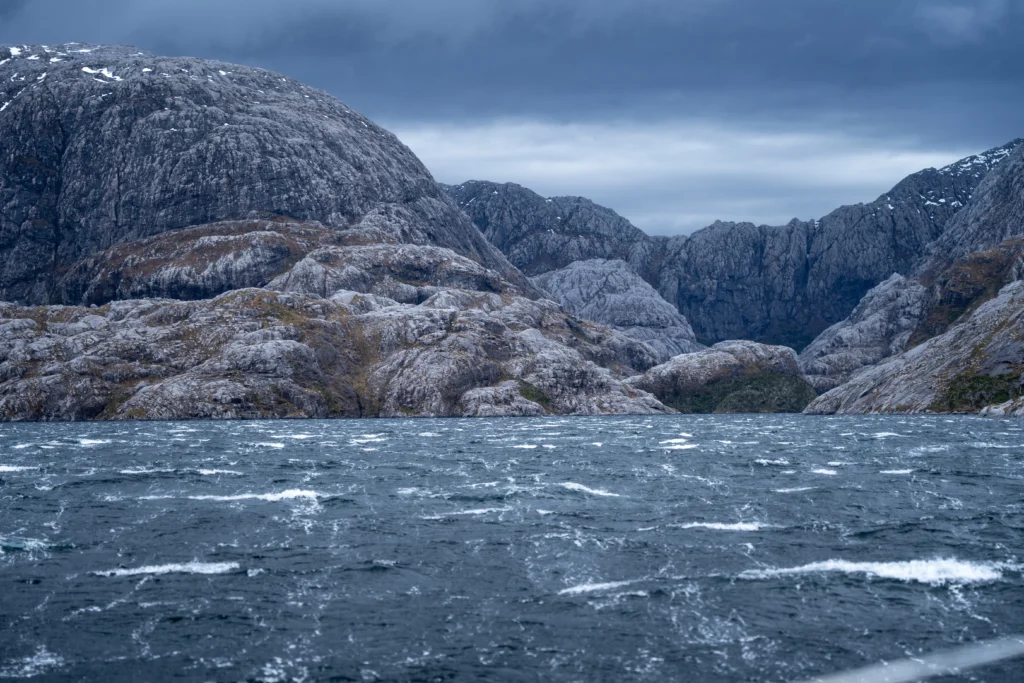
Along the Champs de Glace
Our passage through the Última Esperanza region, one of the rare moments when the wind pushes us in the right direction, gives us a welcome interlude after two months of close quarters in the rain. This region, halfway between the wet canals of western Patagonia and the vast Argentine plains, offers breathtaking scenery that keeps us here for some fifty days. Then, after a refuelling stop in Puerto Natales and an express return trip to Argentina to renew our visa, we set off again on Christmas Day. By then, the typical summer weather of the canals had set in: north-westerly wind and overcast skies. And it rains, not heavily, but almost every day. Inside, nothing is dry, while outside, the vegetation is saturated with humidity and the moss carpet is waterlogged like a sponge. We come across more cypress trees, and the nothofagus forests grow taller and thicker. Along the way, we take a few detours into the heart of the Andes, where sheer mountains and narrow fjords add to the sense of grandeur. When we come across our first huemuls, we tell ourselves that nothing can match this moment. Then we enter the Seno Eyre, all the way to the Pie XI glacier. Even in the midst of such grandiose scenery, it’s an imposing sight. It’s the largest tidal glacier in South America – 65 km long, over 60 m high and 4.5 km wide at its base. From the boat, we listen to the dry creaks and muffled rumblings of this slowly advancing giant. After a while, we manage to sense when a fall is approaching: the cracking intensifies, the ice moves, and then, with a deafening noise, a huge block breaks off and falls into the sea with a crash.
At this stage, we’ve been in Patagonia for ten months, and feel more comfortable leaving the main channels. So we take a few detours into the uncharted, ice-filled eastern fjords. The sense of isolation is total. Every anchorage gives the impression that no one has ever been there – and accessing them with our “tupperware” feels special, like a well-deserved privilege.
Golfe des Peines
Marking the border between South and North, the Gulf of Penas remains a symbolic passage for anyone sailing in Patagonia. Its name evokes all that it represents: conditions so difficult that most boats cross it in one go, in a hurry to get back to the protection of the canals. As a result, there are very few accounts of this stretch of the river. For us, it was undoubtedly one of the most tangible ways of approaching what exploration might have been like at a time when these lands were still just white spaces on the map. As luck would have it, an exceptional weather window opened up: far beyond what
we could have hoped for. Twenty days of exploration lay before us.
We discover immense white sandy beaches bordered by deep green forests. The landscape is reminiscent of northeastern Australia, except that snow-capped peaks dominate the background. To the north of the gulf lies the Taitao peninsula, where the biggest low-pressure system of the season broke all records: 97 knots of wind according to the keepers of the Raper lighthouse, who were still repairing their roof when we stopped by to say hello a few days later. A little further on, we spent an entire week exploring every nook and cranny of one of the only sheltered bays along this hostile coastline. We discovered numerous spots for locos – those exceptionally tasty Chilean abalone – an unexpected surf spot and hot springs at the perfect temperature. The Gulf of Penas – like the rest of Patagonia – has much more to offer than frightening tales of navigation and tragic shipwrecks; it hides landscapes of imposing beauty, wild horizons that invite exploration and discovery.
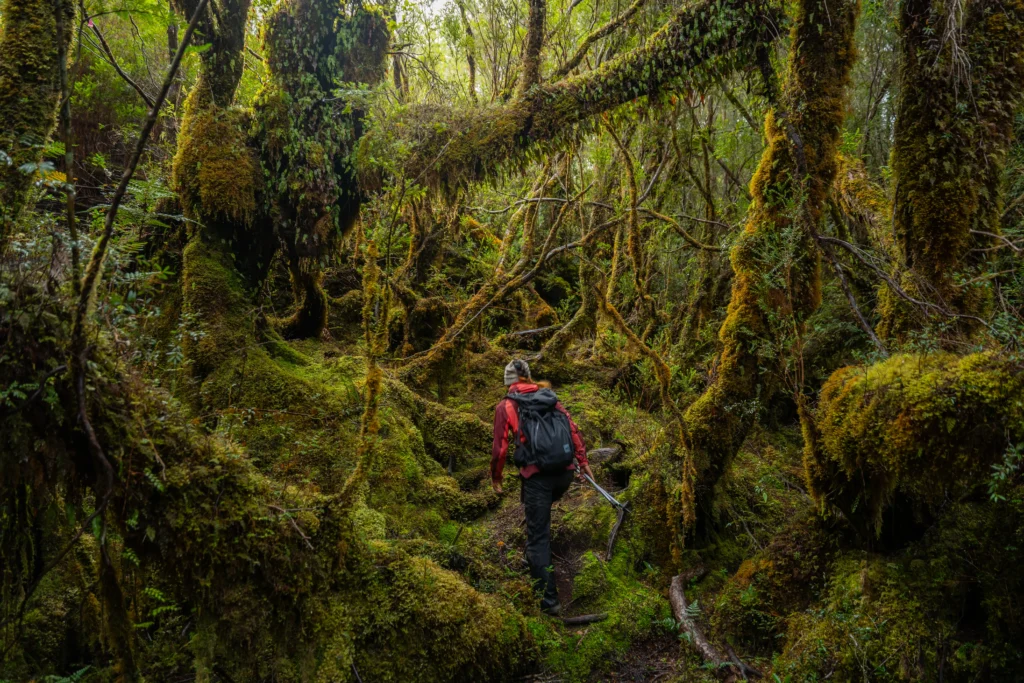
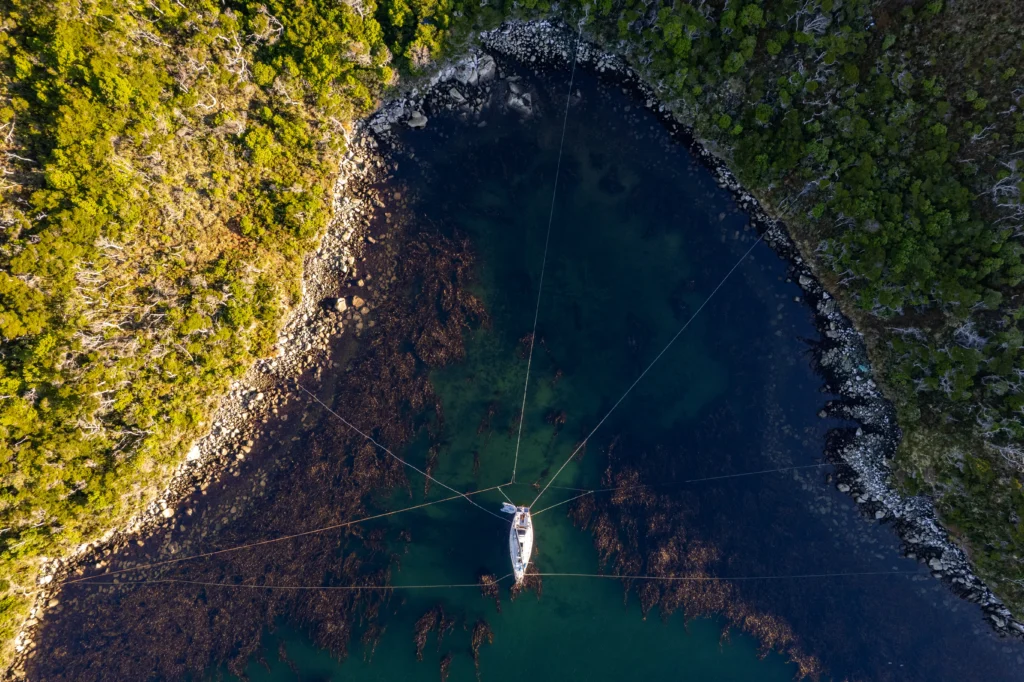
Head west, heart south
After so many days living by the wind, studying maps and listening to the silence of the fjords, it’s not surprising that life at sea is so hard to give up. How much longer this one will hold us back, I don’t know. But as more than forty days of ocean sailing lie ahead of us, en route to French Polynesia, one thing is certain: this voyage, rich as it has been, has only half-opened the door to what this life can offer – immersion in unspoiled nature, moments of pure intensity, and that profound freedom that accompanies every mile.
Practical info
It’s possible to sail in Patagonia all year round. In the north, between Puerto Montt and the Aysén region, the ideal period is from November to February. The southern summer is relatively mild, with less rain and less exposure to Pacific lows. Moving southwards – particularly in Tierra del Fuego – autumn (April to June) offers the most stable days, with beautiful light and more moderate winds. Winter quickly sets in, and many anchorages become impassable due to ice. The shoulder seasons (March-April and September-October) are more unstable, marked by very changeable conditions. Between Puerto Montt and Puerto Chacabuco, there are plenty of opportunities for refuelling. There are several coastal villages where you can refuel with diesel and fresh produce. Further south, on the other hand, supply points become rarer and often require deviation from the main itinerary. Caleta Tortel and Puerto Natales are the main options, but they involve a substantial detour. Only Puerto Edén, located halfway between Chacabuco and the Strait of Magellan, offers refuelling directly on the road – but resources are limited and availability uncertain. Further south, Punta Arenas, Ushuaïa and Puerto Williams offer good fuel, food and equipment capacities, as well as the possibility of receiving deliveries to order. Repairs can be carried out in most cities, although services are not always adapted to sailboats. So it’s best to anticipate your technical needs before venturing into the most remote areas. Valdivia and Puerto Montt have well-developed infrastructures for leaving a boat in port for long periods. Further south, only Ushuaïa and Puerto Williams offer this type of parking, with a more basic but sufficient level of service.

